Commercial fleets represent approximately 10% of total European emissions. Playing an essential role in the continent’s green transition, there is a significant drive for sustainability and electrification of commercial fleets. However, the switch to EV-native fleet management and operations is complex, costly, and disruptive. The core of the problem lies in the fact that the commercial fleet ecosystem – from vehicle leasing to fleet operations – treats EVs like low-grade ICEs (internal combustion engine vehicles), not capitalizing upon EV’s benefits, such as their high durability and energy efficiency.
This is why we are excited to back Pelikan Mobility, a UK and France-based deeptech platform on a mission to optimize the financing and operations of sustainable commercial fleets.
Founded by David Salfati (Engie, Macquarie) and Vincent Schachter (CEA, TotalEnergies, smart-charging pioneer eMotorWerks sold to Enel) – who have a combined 30 years of experience in the fields of energy, mobility, algorithm development, and real assets finance – Pelikan aims to introduce the next logical step in shifting commercial mobility to electric vehicle (EV): tech-enabled, operations-centric leasing solutions.
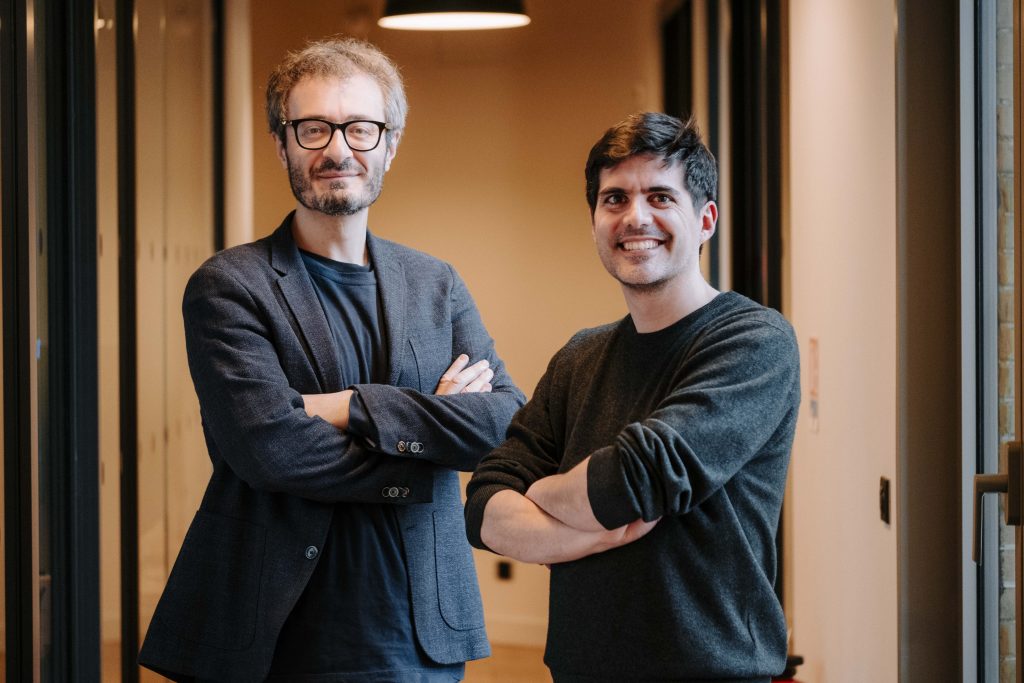
Pelikan bridges EV leasing and fleet operations, driving down the cost of electrification by:
How does Pelikan work?
The company is developing a digital twin-enhanced EV-native leasing solution. It reconstructs – from readily available client data – digital twins that precisely capture each fleet’s operations, constraints, and business challenges.
The platform’s AI and combinatorial optimization algorithms enable the efficient integration of EVs and charging solutions into each fleet’s operations over several years.
To build an operations-centric lease plan, Pelikan starts from the fleet’s operational goals and constraints and computes the optimal use of each type of vehicle (ICEs and EVs, at different stages in their lifecycle) and the financing profile that matches that usage value. These usage and financing profiles are translated into a cost-effective and productive EVs lease plan.
Furthermore, the platform tracks and optimizes operations on an ongoing basis, ensuring the fleet leverages the full potential of its assets.
Pelikan Mobility’s solution is being deployed and tested with major utility and logistics players in France.
Vincent Schachter, co-founder, comments:
“Pelikan’s mission is to drive massive electrification of commercial fleets. In order to achieve this, we are convinced that a radically new approach is necessary. We started by developing our technology for usage-driven optimization and fine-tuned its capabilities with our first customers. With this initial round of funding, we will leverage it to lease cost-effective and productive EVs tailored to the context of each fleet“.
David Salfati, co-founder, adds:
“The finance world will need to deploy dozens of billions of euros every year into commercial EV assets, whilst the operations world will need to run them efficiently to power their business. Bridging these two worlds to ensure that capital flows into productive and efficient assets is going to be mission critical, and core to what Pelikan is building.”
On why we invested in Pelikan, Kate McGinn from our investor team, comments:
“The transportation sector accounts for 29% of our annual greenhouse gas emissions. Even though we have the technology to dramatically reduce this number, current leasing options are creating a bottleneck for commercial EVs to be used at-scale. As the commercial green leaser of choice, Pelikan is solving this bottleneck and challenging the way electric vehicles are financed and operated. Pelikan is finally making the green choice a pragmatic one.”
We are excited to participate in Pelikan’s €4 million funding round, alongside Pale Blue Dot, Frst, and other investors.
With the new funds, Pelikan aims to launch the leasing offer.
For more information, visit pelikan-mobility.com.
Driven by the rapid adoption of EVs across Europe, there is an increased demand for public infrastructure to provide quick and frictionless usage of charging stations to end customers.
Given the multitude of eMobility stakeholders building the EV charging infrastructure, a reliable and scalable connectivity layer is essential to provide better EV Driver experiences. Current solutions lack scalability, are expensive, and lead to poor data quality around charge point availability and charging fees.
This is why we are excited to back Enapi, a Berlin-based connectivity platform for collaboration in the electric vehicle (EV) charging industry. It facilitates connections between Charge Point Operators and entities developing and providing digital charging solutions for consumers and businesses.
Founded by Jakob Kleihues (CEO) and Dennis Laumen (CTO), Enapi is building the transaction broker and clearing house for the electric vehicle (EV) charging industry to effectively connect Charge Point Operators and eMobility Service Providers. As an infrastructure layer company, it aims to tackle the challenges of technical interoperability.

On a mission to build the most secure, reliable, and scalable platform for stakeholder collaboration in the EV industry, Enapi empowers participants in the marketplace to adopt and expand the use of open protocols, thereby enhancing community collaboration and elevating the quality of data. The Enapi Transaction Broker enables EV charging transactions, using the OCPI standard to ensure seamless charging station connectivity.
Jakob Kleihues, co-founder and CEO of Enapi, says:
“The EV charging infrastructure is broken. Enapi plays a pivotal role in enabling charge point connectivity and creating streamlined collaboration to improve the way we charge our electric cars. Enapi serves a large addressable global market of electric vehicle charging transactions, helping to deliver a better EV driver experience and thus fueling the green mobility revolution.”
On why we invested, Kate McGinn from our investment team comments:
“Over the next 10 years, we have to build out the green equivalent to our petrol station network, all the while not falling prey to copy/paste approaches which don’t take into account the intricacies of ICE vs EV. Enapi is building the unified API for EV charging and removing friction for all parties in the charging world to communicate seamlessly with each other. We’re thrilled to partner with industry insiders Jakob and Dennis on this journey.”
We are excited to participate in Enapi’s €2.5 million pre-seed round alongside Project A Ventures and HelloWorld. With the new funds, the company plans to expand its network, enhance the data quality on the platform, and build clearing house functionalities to enable charge point connectivity at scale.
Enapi launches its service today with a group of renowned partners across Europe onboarded: Electra (FR), Monta (Nordics), JUCR (GER), Osprey, Octopus Electroverse, OVO Drive, Paua (UK). Other stakeholders from the industry can join the platform by invitation or join the waitlist.
For more information, visit enapi.com.
Cybersecurity has always been a fast changing landscape, but with the rise of widespread-access AI tools such as ChatGPT, we are seeing Artificial intelligence is catalysing a paradigm shift in cybersecurity architecture. Traditional systems, designed to protect against decades of relatively stable known threat types, are increasingly inadequate against AI-augmented attacks, which can analyze vast datasets and exploit vulnerabilities at unprecedented speed and with unprecedented creativity.
Emerging challenges, such as the automated generation of sophisticated phishing attacks, which grew between 500% and 1000% YoY in 2023, or the exploitation of previously unknown software flaws which are being brought to light at volume through AI, require urgent solutions. Massive data management challenges and breaches are surging and impacting public businesses like Hubspot to security darlings like Okta. This isn’t just a risk to survival and security is no longer considered just a cost center. It is also critical infrastructure and 90%+ of businesses with poor security practices missed revenue goals last year. Even the premise behind alerts, alerts analysis and alert management is under stress due to the creative nature of attacks which can be layered and more complex than ever before.
This has prompted a wave of innovation among cybersecurity firms, focusing on adaptive, AI-centric security frameworks. These frameworks are designed to anticipate the evolving tactics of adversaries, ensuring that digital infrastructures can withstand the sophisticated cyber threats of tomorrow. Managing software access for AI agents or integrating security practices in the production and deployment of code, for example, are starting to emerge as crucial lines of defense for any organisation.
_________________________________________________________________________________________
At Seedcamp, we are aware of the above challenges and more, and thus are investing in a new stack of tooling and frameworks to stop attackers in the era of generative AI. Whereas tooling once focused on a certain element like a network, or a device, software is increasingly safeguarding the intersections and understanding the intent of both machines and humans.
To this end, our thesis is underpinned by four distinct categories:
(1) Managing identity more intelligently for humans and machine agents
(2) Shifting left in the software development lifecycle to secure code as it is written
(3) Surfacing complex fraud detection beyond simple pattern recognition
(4) Securing an organisation’s data, regardless of how it is managed in transit, at rest and in use.
In the past, access management was rules-based systems that ensured only the right people access an organization’s data and resources. Role Based Access Management (RBAC), Identity Access Management (IAM) and Privileged Access Management (PAM) were ‘top-down’ and permitted access based on an employee’s rank and function. This was typically a ‘point solution’ in the sense that it solves a single problem in a tightly defined zone of relevance.
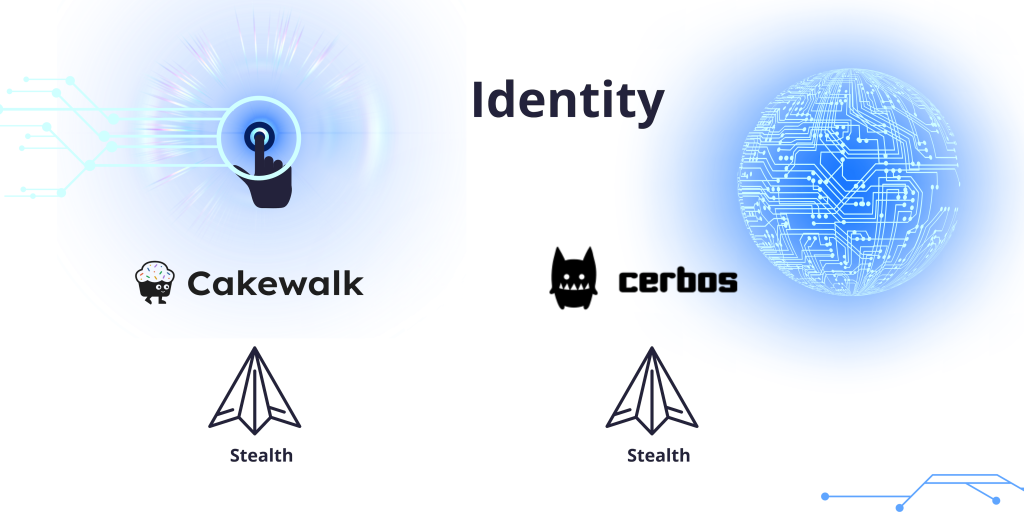
This top-down logic is being replaced by tooling that is more context-aware and primed to handle both machine and human users. Attackers have historically snuck past identity systems by understanding the rules and logic and posing as an entity that is permissioned, i.e. by using the email address and password of an employee. Today, machine agents are accessing the same software without passwords or ‘clearance’ in a traditional sense. It is therefore imperative to understand the ‘why’ and ‘how’ behind an access request, in order to decide on what should and should not be accessed. To this end, we have invested in businesses that manage, protect and bring visibility to this evolving environment.
“AI is fundamentally changing the way companies manage their access to software: AI provides context to processes that were merely rule-based in the past. Think of user access reviews, offboarding, or time-based access – AI guides IT and Security teams with recommendations (e.g. “Julia hasn’t used Figma for 9 weeks. You can most likely remove her access.”). This not only frees IT and security teams from manual, mundane tasks but also increases your security and compliance posture.”
Johannes Keienburg, CEO of Cakewalk
Classical cybersecurity largely safeguards the end product – the ‘surface area’ is the zone in which users interact with the software. Detection happens after code has been written and shipped and prevents attacks on the application or infrastructure. Recently, tools are ‘shifting left’ in the software development cycle to automatically check the code base for vulnerabilities.
This developer-first tooling began by effectively scanning static code bases. More recently, it has become ‘real-time’ to operate in parallel with the machine or human actually writing code. To the chagrin of software developers, programming is merging with security and vulnerability scanning will inevitably be instantaneous as code is written. To generalise, these alerts are slightly ‘higher fidelity’ and can help provision resources and even prioritise the haul of alerts that security analysts currently handle.
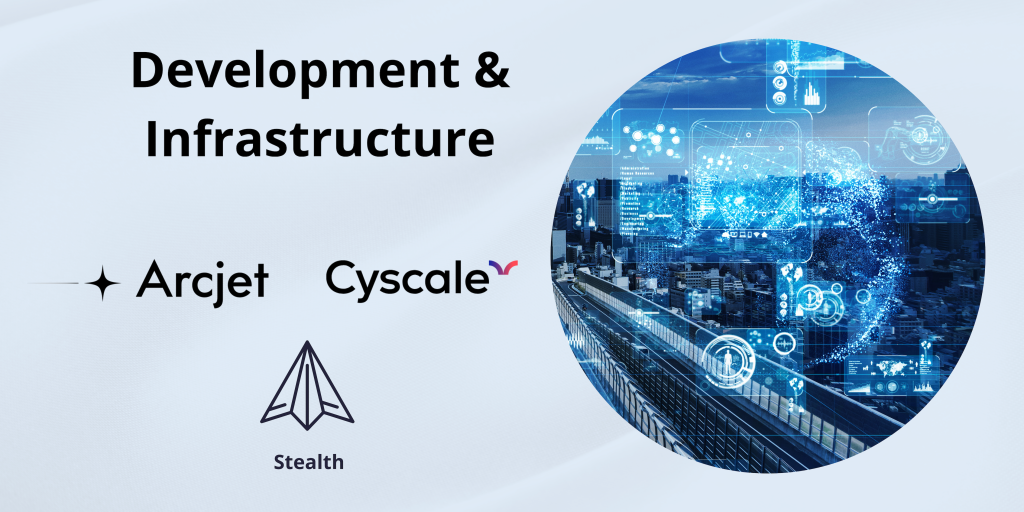
Catching issues long before code is shipped to the enterprise is exciting and at Seedcamp we are pleased to partner with organisations who make this their mission, including:
“Security should be something developers take responsibility for in the same way they consider how to structure their application, which database to use, and how to approach writing integration tests. It’s often said that developers don’t care about security, when really they just don’t have the right tooling. That needs to change if we want to build software that is secure by design.”
David Mytton, CEO of Arcjet
Impersonation and identity theft represent an enormous threat surface area for the enterprise and for individuals. Global fraud is worth over $1 trillion and onboarding customers, businesses and employees is a huge cost-center. To verify and approve a single identity, enterprises are already deploying several different packages which might independently check KYC, AML, sanctions, political interests and more. For fraudsters, it is essentially very easy to triangulate the personal details of someone from social media and online content. The volume of attempted attacks is only likely to continue growing.
Additionally, fraud tends to be lodged in opaque spaces. Longtail personal details and identities are rarely checked, such as a reference for a job, a merchant on a food delivery platform or a guarantor of a tenancy. Hiding stolen identities or non-compliant information deep in documentation has historically been a simple way to get around checks which tend to focus on the main event – the user or customer.
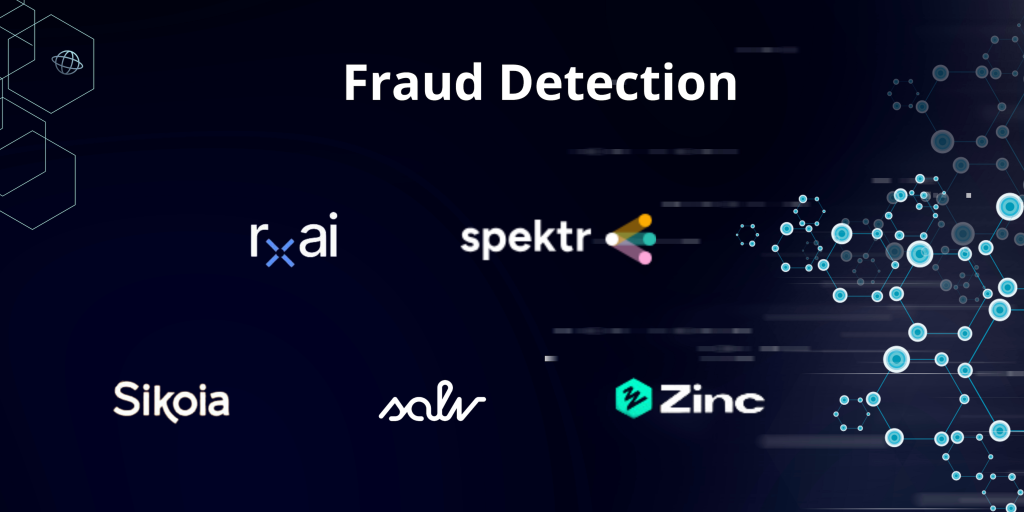
At Seedcamp, we are excited to partner with businesses securing the entire enterprise workflow against fraudulent individuals and businesses. Some of the solutions we’ve backed include:
“Rising identity-based cyberattacks demand proactive solutions, making automated KYC verification vital for a more secure environment for businesses and their customers. With spektr, continuous client data monitoring, proactive alerts on profile changes, and international data screening ensure fast, secure operations.”
Mikkel Skarnager, CEO of spektr
Finally, it is no secret that organisations are losing an uphill battle to prevent data leakage. As data is plugged into language models, it is almost impossible to tackle the probability that it will escape as an output and be sent outside the organisation. The explosion of free browser based services also means that employees are uploading confidential data on a daily basis to design, content and other automated tools that may be visible to 3rd parties.
“The cybersecurity battleground is shifting. While traditional tools such as perimeter defenses are still important, they don’t work for the large and constantly growing attack surfaces that Generative AI exposes to enterprises. The first line of defense is the application developer. At Bookend we’re building for a future where developers can quickly and simply protect applications from Generative AI-related threat vectors that cause model misbehavior, and focus instead on empowering their organizations to innovate more rapidly.”
Pravin Pillai, CEO of Bookend AI
New tools are emerging to tackle this problem and the process of tracing data and keeping it squarely within an organisation’s four walls is just beginning. Where security was previously one-size-fits-all, it will need to intensify at certain intersections to prevent issues like toxicity and shield employees from a growing wave of fake AI-driven messaging and content.
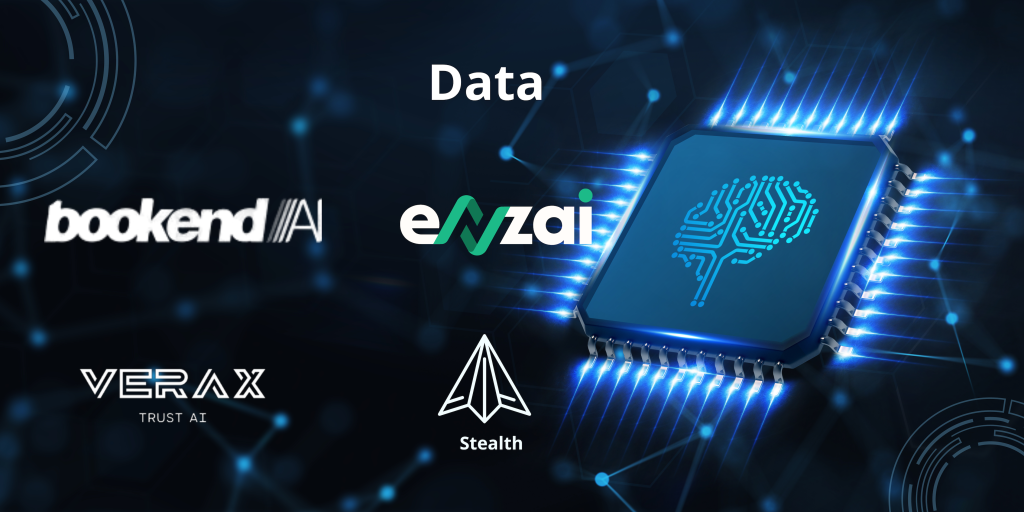
We are excited about the companies we have partnered with to bring transparency, collaboration and trust to data in the enterprise:
“The old paradigm for data security treated it as atomic pieces of information. With the rise of Large Language Models (LLMs), Natural Language Processing (NLP), and evolving AI/ML techniques, the challenge of data security has now shifted to the level of Knowledge Management which derives meaning from the data we once tried to protect. The paradigms of the old model do not translate well or scale to the new model and we have to find a more effective path than trying to persist the illusion of having our arms around the atomic information.”
Nick Vigier, CISO of Oscar Health*
_____________________________________________________________________________________
The security landscape is evolving rapidly and we are actively trying to solve how best to protect our valuable information infrastructure. If you are a founder of an early-stage security startup, we would love to hear what you’re building!
*Not a Seedcamp portfolio company
Regulatory and technological tailwinds drive investment decisions and as we look ahead, we are excited about emerging catalysts for the software stack and for society. In this article, we touch on just some of the solutions we think might change the world in the next 17 years.
Above all, the demands of our warming planet, chronic disease and disorganised digital environments are in need of software solutions more than ever. Although we can’t wait for a bitcoin ETF to propel decentralised applications and WebTransport and WebGPU to unlock instantaneous, collaborative and high quality entertainment experiences, here we focus specifically on the future of critical infrastructure across security, climate and techbio.
Security
It’s no secret that our digital and physical worlds are changing and we need new software to make them sufficiently secure. So far in Fund VI, we have backed Enzai, Arcjet, Spektr, Bookend, and others still in stealth mode, and look forward to more outstanding opportunities.
The elephant in the room is that generative AI creates immense data risks and we are faced with myriad known unknowns. For example, we haven’t figured out identity control for AI agents that operate software autonomously, access management to company data that can be queried by anyone and open source model safety, whose output is almost untraceable to training data.
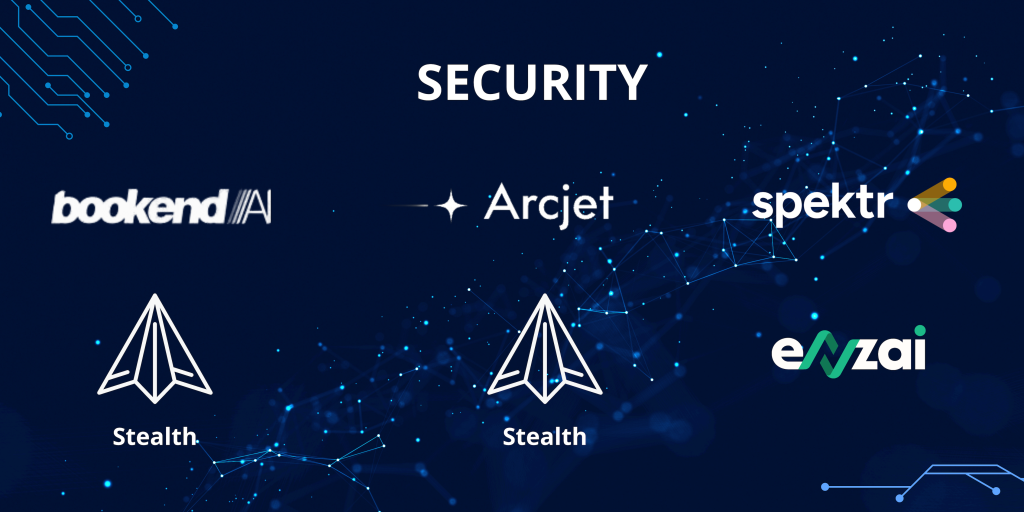
In our cybersecurity portfolio deepdive we focus on these emerging challenges and how our portfolio is primed to support enterprises and capture value.
Climate
Elsewhere in sectors like climate and cleantech, we combine a distinctive track record with strong conviction about why the time is right. Seedcamp has supported THIS and Julienne Bruno on their journeys to become two of Europe’s fastest growing plant-food brands, while Papaya, Granular and Sylvera are emerging as early leaders across EV fleet management, energy market solutions and carbon data. We are also especially excited about vertical fintech in clean energy and we look forward to the journeys of Paua and other unannounced commitments driving optionality and flexibility for early adopters.
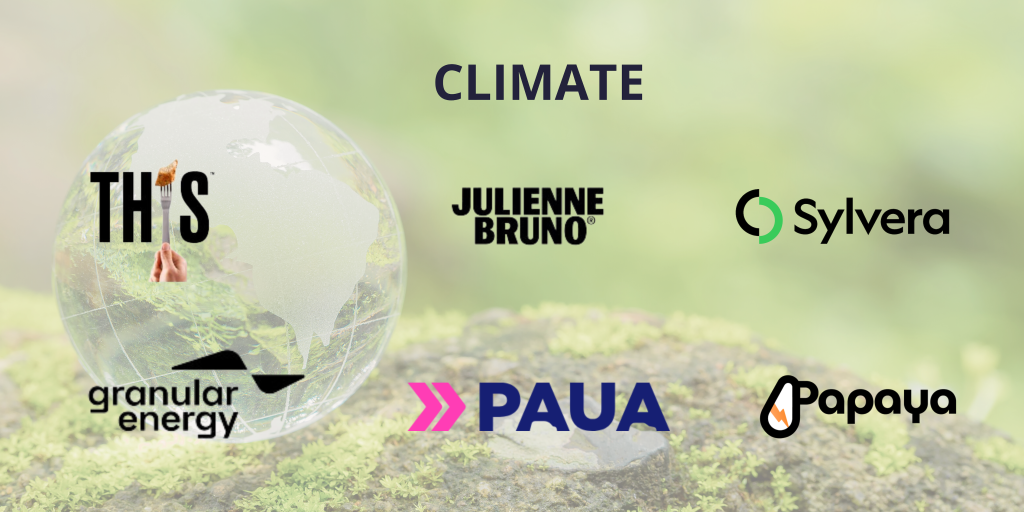
Over the coming years, we anticipate the emergence of infrastructure that will power a clean and efficient energy system. Be that software that drives a smarter grid and better load-balancing, connected batteries that avoid discharging at times when their operating costs exceed the price of energy or intelligent, local procurement to avoid sending energy hundreds of miles on lossy lines across a continent with thousands of grids and DNOs. At smaller scales, we see the interaction of sensor technology, the Internet of Things and edge-based machine learning dramatically improving industrial energy consumption. Currently, usage is ungovernable and expensive. We anticipate a future where top-line energy consumption doesn’t necessarily need to be pared back, but we can access data and understand usage far more intelligently.
Techbio
Finally in techbio, we look forward to being part of the software-enabled future of drug targeting and discovery. We have already backed businesses like Inovia Bio, Twig Bio and Sable Bio, Lindus Health in clinical trialing, and Faks at the other end of the supply chain in drug delivery. In the coming decade, we see a wealth of opportunities throughout the biomedicine stack; to research and develop treatment for chronic infections like SARS-CoV-2, to anticipate and prevent target failures, and to build the molecules needed for food without meat and plastic without petrochemicals.
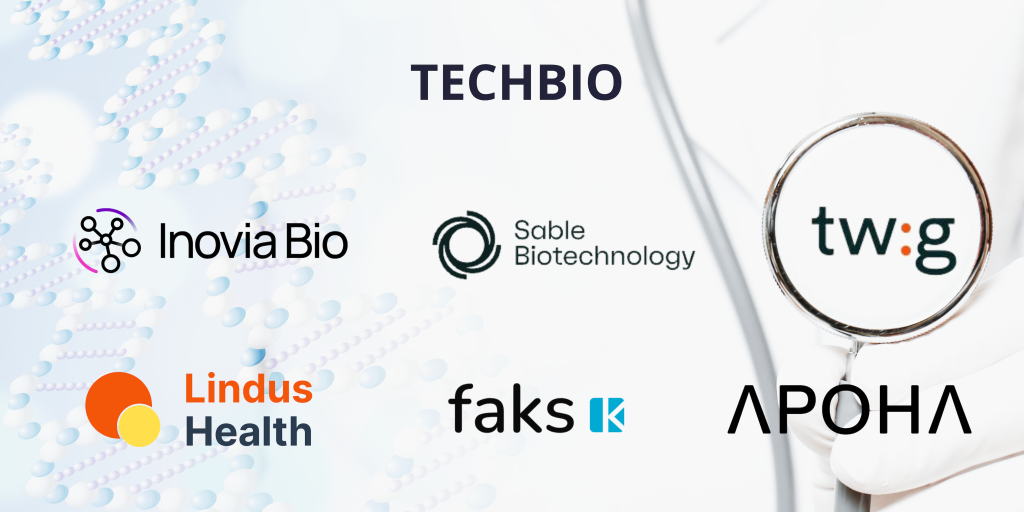
Research at the intersection of biology and computing is also primed for a tipping point. Businesses like Apoha are driving sensory intelligence and we anticipate many more use cases of unconventional or neuromorphic computing architectures and even substrates that reflect the brain’s qualities.
For example, rather than the input-output systems of deep learning where training and inference are essentially separate chronological activities, a continuous state machine similar to the human brain’s operating system, would enable a network to evolve around changing parameters, perhaps even paving a route to AGI. Elsewhere we could even see storage based on biology’s principles – a single gram of DNA is worth 200 terabytes – and active inference techniques allowing drones and robots to deploy the sensibilities of a person. We think Retrieval Augmented Generation and NLP applications are exciting but we also can’t wait to see the impact of machine learning on life-saving science, and vice-versa.
_________________________________________________________________________________________
Of course, techbio, security and climate are just a few of the sectors where we think software has enormous potential to disrupt the next decade. Evolving categories like vertical-market software, blockchain infrastructure, database management systems and many more are at the top of our agenda, in addition to more mainstream sectors like fintech, which are yet to fully penetrate society. At Seedcamp our world class in-house experts cover almost every sector and job function, helping entrepreneurs steer the ship, evangelize the product and raise impactful rounds on the way to becoming a category-defining business. As ever, we are always on the lookout for Europe’s strongest founders at the start of their journey–if that’s you, please get in touch on our website or reach out to any member of the team!
If you missed the previous two installments of this series, catch up here and here.
Copyright © 2019 Seedcamp
Website design × Point Studio